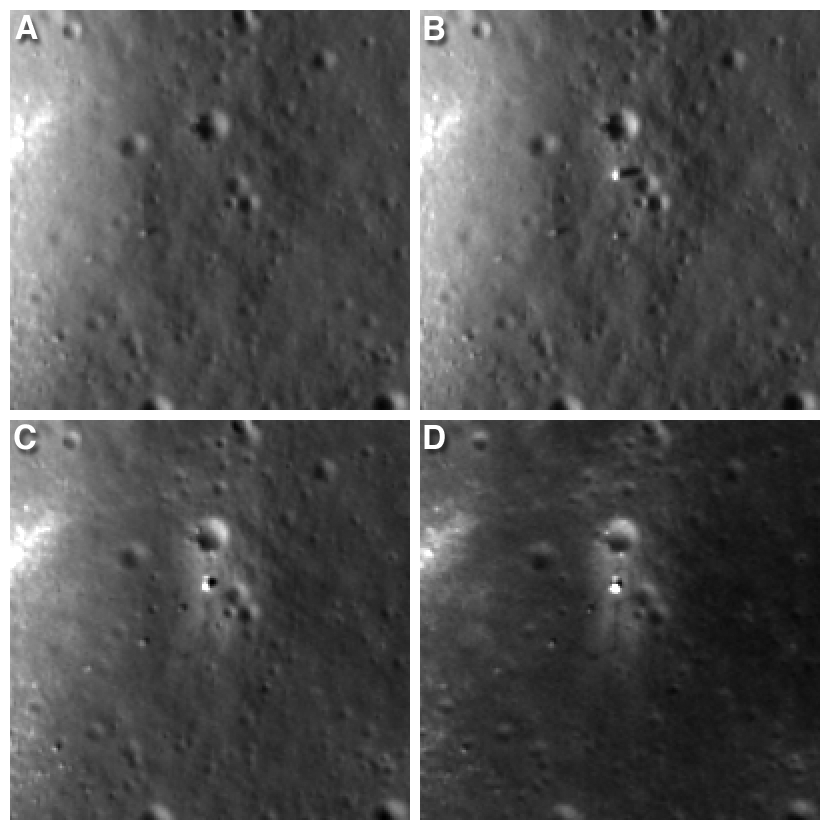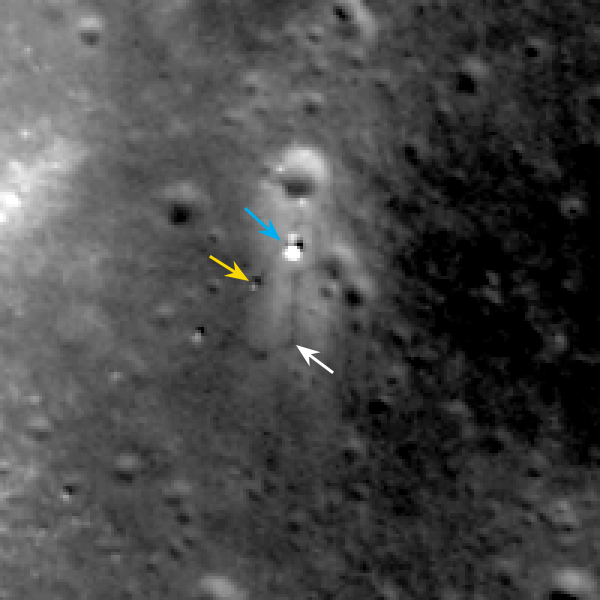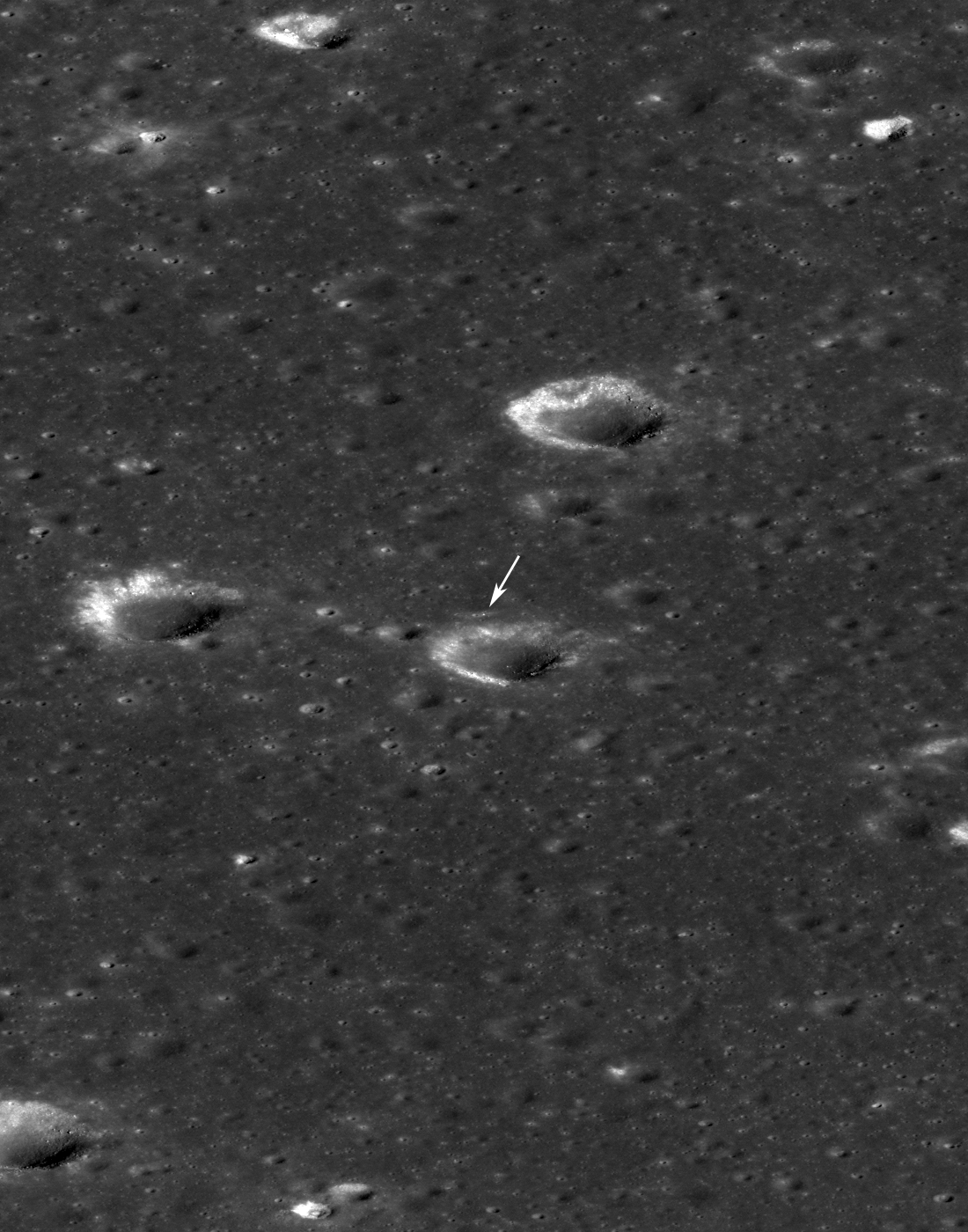
Chang'e 3 landed on Mare Imbrium (Sea of Rains) on 14 December 2013. LROC has now imaged the lander and rover three times: 25 December 2013 (M1142582775R), 21 January 2014 (M1144936321L), and 17 February 2014 (M1147290066R). From month-to-month the solar incidence angle decreased steadily from 77° to 45° (incidence angle at sunset is 90°); due to the latitude of the site (44.1214°N, 340.4884°E, -2630 meters elevation) the incidence angle cannot get much smaller. Solar incidence angle is a measure of the Sun above the horizon; at noon on the equator the Sun is overhead and the incidence angle is 0°, at dawn or dusk the incidence angle is 90°.
As the Sun gets higher above the horizon, topography appears subdued and reflectance differences become more apparent. In the case of the Chang'e 3 site, with the Sun higher in the sky one can now see Yutu's tracks (February image). In the opening image you can see Yutu about 30 meters south of the lander, then it moved to the northwest and parked 17 meters southwest of the lander. In the February image it is apparent that Yutu did not move appreciably from the January location.
Owing to the lower solar incidence angle the latest NAC image better shows Yutu's tracks and the lander engine blast zone (high reflectance) that runs north-to-south relative to the lander. Next month the solar incidence angle will again increase and subtle landforms will begin to dominate the landscape.
Related LROC Featured Images
Chang'e 3 Lander and Rover From Above
Safe on the Surface of the Moon
Coordinates of Robotic Spacecraft
Published by Mark Robinson on 4 March 2014


